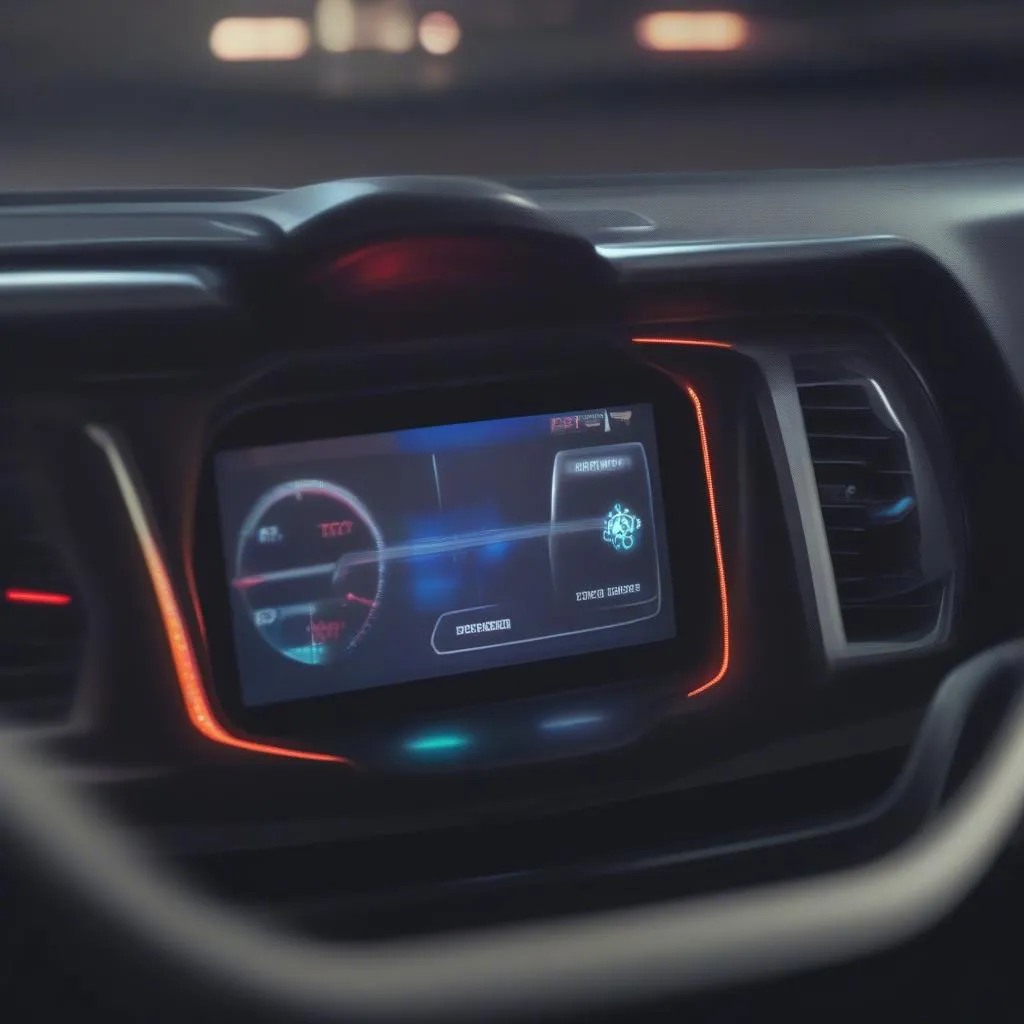A mini brake light warning on your car’s dashboard can be a worrying sight. It usually indicates a problem with your brake system, which is critical for your safety and the safety of others on the road. This warning light should be taken seriously, and you should address the issue as soon as possible.
Understanding the Mini Brake Light Warning
This warning light, often depicted as a red circle with an exclamation point inside, illuminates when the vehicle’s braking system detects a fault. It can be triggered by a variety of factors, including:
- Low brake fluid: This is the most common cause of a mini brake light warning. Brake fluid is essential for hydraulic braking systems, and if the level is low, it can cause the brake pedal to feel spongy or ineffective.
- Brake pad wear: Worn brake pads are another common cause of a mini brake light warning. The warning system is designed to alert you when the brake pads are worn down to a specific thickness.
- Faulty brake sensors: These sensors monitor the brake system and send information to the computer. If a sensor malfunctions, it can trigger a warning light.
- Electrical issues: Occasionally, the warning light can be activated by an electrical issue, such as a faulty wiring harness or a problem with the brake light switch.
- Parking brake issues: If your parking brake is not engaged properly, it can also trigger the mini brake light warning.
What to Do When the Mini Brake Light Warning Appears
- Don’t panic: While it is important to address the issue, try to remain calm and think clearly.
- Check the brake fluid level: Open the hood of your vehicle and locate the brake fluid reservoir. This is usually a clear plastic container with markings for the minimum and maximum fluid levels. If the fluid level is low, add brake fluid. Be sure to use the correct type of brake fluid for your vehicle.
- Check the brake pads: If the fluid level is fine, the next step is to check the brake pads. You can do this by removing the wheels and visually inspecting the brake pads. If the pads are worn down to the wear indicator, you will need to have them replaced.
- Get it checked by a professional: If you are not comfortable checking the brake fluid level or brake pads yourself, or if the warning light continues to illuminate after you have addressed the issue, it is important to take your car to a qualified mechanic.
Common Mini Brake Light Warning Causes and Solutions
Low Brake Fluid
“Low brake fluid is often the culprit behind a mini brake light warning,” explains David Chen, a seasoned automotive technician. This issue is easily solved by adding brake fluid to the reservoir. But, low brake fluid can also indicate a leak, which should be addressed promptly by a mechanic.
Worn Brake Pads
“A worn brake pad can create excessive heat and friction, ultimately resulting in a mini brake light warning,” warns Mary Smith, a certified brake specialist. This issue is solved by replacing the worn brake pads.
Faulty Brake Sensors
“Don’t underestimate the impact of a faulty brake sensor,” says Tom Jones, a reputable auto electrical expert. If the sensor is malfunctioning, it can trigger the warning light even if there is no actual problem with the brake system. A mechanic can diagnose and replace a faulty brake sensor.
What Could Happen if You Ignore the Warning Light
Ignoring a mini brake light warning can be dangerous. A failing brake system can lead to a loss of braking power, which could result in an accident.
Here’s why ignoring the warning light is not advisable:
- Loss of braking power: A faulty brake system can lead to a loss of braking power, which could result in an accident.
- Damage to the brake system: A failing brake system can lead to further damage to other components, which could cost you more money in the long run.
- Reduced safety: A failing brake system puts you and others on the road at risk.
Conclusion
A mini brake light warning should not be ignored. While the issue might be minor, it’s best to have it checked by a qualified mechanic to avoid more serious problems. Don’t compromise your safety or the safety of others.
Take action today and keep your car’s brake system in top condition!
FAQ
Q: What should I do if I hear a screeching noise when I brake?
A: This usually indicates that your brake pads are worn down to the metal and need to be replaced.
Q: Can I drive with a mini brake light warning?
A: You should avoid driving with a mini brake light warning, as this indicates a potential brake system problem. It’s best to get your car checked by a mechanic immediately.
Q: How often should I check my brake fluid level?
A: It’s a good practice to check the brake fluid level every few months, or more often if you notice any changes in braking performance.
Q: How much does it cost to fix a mini brake light warning?
A: The cost of fixing a mini brake light warning can vary depending on the issue. Replacing brake pads can cost anywhere from $100 to $300, while replacing a brake sensor can cost a few hundred dollars. If there is a leak in the brake system, the repair costs can be higher.
Q: What are some signs of a brake problem besides the mini brake light warning?
A: Other signs of a brake problem include a soft brake pedal, a squeaking or grinding noise when braking, and a pulsating brake pedal.


